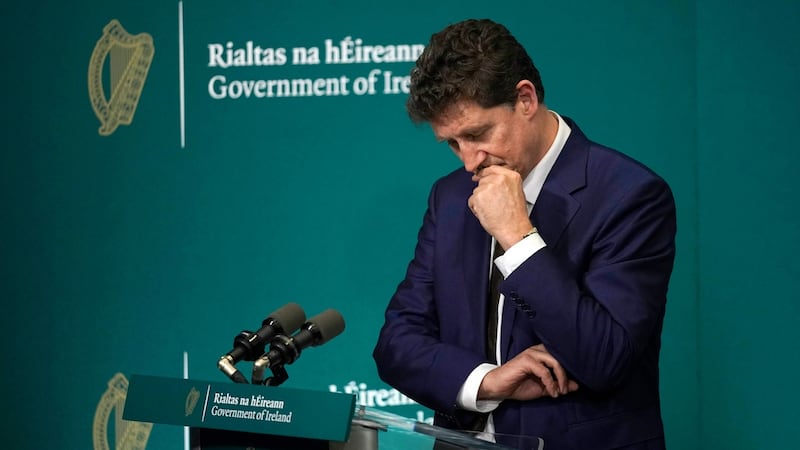The Government’s new retrofitting programme adds up to its single biggest infrastructure investment up to 2030; €8 billion stumped up by the State. All told, that is €22 billion when private funding, householder commitments and construction sector activity are factored in.
These are eye-watering figures – considerably higher than the Metrolink, and all road projects combined planned for the next decade – but they come with huge risks, especially when skill shortages and soaring inflation have already surfaced.
It will require meticulous rollout of projects, rigorous regulation of suppliers and new forms of collaboration between State agencies – notably the Sustainable Energy Authority of Ireland – the construction sector and low-cost finance providers.
There will be no room for failures of the past, such as annual retrofitting funding running out, if 500,000 homes are to be deep retrofitted, and 400,000 heat pumps are to be installed in private households in just eight years.
There are now three Government strategies – Housing for All, the National Development Plan and the National Retrofitting Scheme – in place involving hundreds of billions of euro "providing at least a generation's worth of work for construction industry", as the Construction Industry Federation acknowledges.
Specifically, a combination of certainty and targeted investment is being billed as the gamechanger for retrofitting. Multiannual funding will end its notorious stop-start reputation.
Poor delivery up to now provides little reassurance retrofits can be delivered at scale and on time
For householders, it offers the one-stop shop mechanism to overcome complexities and difficulties sourcing funding in making their homes warm, healthy and less carbon intensive. A fully-sealed house with heat pump offers the prospect of energy bills reduced by two thirds. This is particularly relevant this winter when many homes may have to choose between eating well or staying warm.
In reality, one-stop shops will be run by construction companies often working with energy providers, and increasingly sourcing low-cost loans. Some community energy organisations and smaller contractors will fulfil a similar role, especially in rural areas.

It is a critical element of the national armoury attempting to decarbonising the country and get out of fossil fuels – residential emissions account for about 11 per cent of Ireland’s total greenhouse gas emissions, generating some 7 million tonnes of CO2 every year.
Poor delivery up to now provides little reassurance retrofits can be delivered at scale and on time. And there are additional compounding problems: We are out of step with many EU countries in having old housing stock; draughty and reliant on dirty fossil fuels such as coal, peat, oil and “least polluting” gas, particularly in rural Ireland.
While emissions from buildings have fallen in the past decade, Irish buildings are 70 per cent reliant on fossil fuels. The majority of housing stock is energy inefficient, with only 0.4 to 1.2 per of the stock being renovated each year.
Increasing the Warmer Homes Scheme to €109 million this year is an attempt to ensure retrofitting is not largely confined to the better off
More than 80 per cent of homes and other buildings have an energy performance rating of C or worse while some 1.5 million residential homes need retrofitting. Meanwhile, Irish homes use 7 per cent more energy than the EU average, while emitting 60 per cent more CO2.
A new approach, however, is evident on three fronts. Firstly, there will be a single point of contact for managing retrofits which can provide support, guidance and technical assistance through the entire process.
Low-interest loans
Secondly, banks and credit unions are being incentivised to provide low-interest loans in tandem with targeted SEAI grants including easy-win measures such as insulation. Thirdly, grouping retrofits of houses in a particular area should facilitate quicker delivery.
Other key levers are streamlining and increasing SEAI grants on technical assessment of homes; installing a heat pump, insulation and associated works, and increasing grants from 30 to 35 per cent of overall cost to 45 to 50 per cent with a €25,000 limit.
Increasing the Warmer Homes Scheme to €109 million this year is an attempt to ensure retrofitting is not largely confined to the better off. It provides 100 per cent funding to retrofit low-income houses.
The one constraint that the Government fears is the skills shortage. Some 17,000 workers are needed to enable 75,000 houses to be retrofitted between 2026 and 2030 – when a housing crisis needs unrelenting attention.
Friends of the Earth energy analyst Clare O’Connor underlines the need for clarity, accessibility and consistency if the retrofit part is to be a winner; “the onus should not be placed on the customer to trawl through detailed financing options, research and manage different providers, or fill out complicated application forms”. Such issues were very much the problem up to this point.
Solving the climate crisis requires bold action, which has been in short supply in Ireland for far too long. The retrofit programme represents the kind of at-scale project the EU is demanding under the European green deal. The same attention needs to be applied to transform Irish transport and to redirect the course of Irish agriculture.












